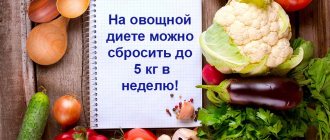It is a well-known fact: fresh fruits, not subjected to heat treatment, retain a maximum of beneficial vitamins and minerals. And the fiber contained in them helps remove dangerous toxins from the body, stimulates intestinal motility and normalizes digestion. But did you know that many common vegetables that we try to eat raw will bring much more benefits when boiled? Together with estet-portal.com, we will find out which of the most popular and favorite vegetables will bring much more benefits if they are pre-boiled.
- Boiled carrots: an affordable source of beta-carotene
- Ode to ketchup and tomato sauce
- Spinach is a favorite among boiled vegetables.
- Stewed cabbage: a luxurious side dish and vitamins
- Boiled beets: borscht, vinaigrette and beetroot soup
- Broccoli: a real treasure from the steamer
Are more nutrients always better?
Raw vegetables often contain more nutrients. Therefore, many people think that they are healthier. And sometimes it's true. But the reality is more complex.
The point is not what you eat, but what our body can absorb.
A 2010 study published in the American Journal of Clinical Nutrition on a group of women some following a regular Western diet, others a healthy diet (based on healthy eating guidelines) and a third group following a raw food diet found that more nutrients were not always better.
For example, participants in the raw food group consumed more beta-carotene per day than participants in any other group. But participants in the healthy eating group absorbed most of this essential antioxidant.
When we cook vegetables, some nutrients are lost. But, at the same time, others begin to be absorbed more easily.
White cabbage
Another product that only becomes healthier after heat treatment. It is best to steam it, then you will retain carotene and antioxidants, and the amount of vitamin C will increase three times compared to fresh. Sauerkraut and shredded cabbage are also useful. When crushed, it releases useful substances well, and when fermented, lactic acid is formed, which helps the body better break down and absorb proteins.
Benefits of Cooked Vegetables
In addition to beta-carotene, some other antioxidants, such as lutein (good for the eyes) and lycopene (which helps protect the heart and bones), are also better absorbed in cooked vegetables
Boiled vegetables contain more minerals. Heating releases bound calcium, making more minerals available for absorption by the body. And the difference can be significant. Cooked spinach contains 245 mg of calcium per cup, while raw spinach has only 30 mg per cup!
Cooking can have other benefits:
- Helps you chew food better
- Increases digestibility
- Increases the net energy value of foods
Additionally, some evidence suggests that cooked foods have contributed to human brain development because they “significantly increase calorie intake by making food easier to chew, digest, and assimilate.”
Boiled or raw? The more vegetables in your diet, the better. Cook vegetables if you know you will eat more cooked.
Boiled carrots: an affordable source of beta-carotene
Carrots are one of the most popular root vegetables, characterized by a high content of beta-carotene, which we need to prevent premature aging, cancer and vision problems. Scientists have been able to establish that boiled carrots share with us not only beta-carotene much more generously, but from it we absorb much more antioxidants than we could get by eating this root vegetable fresh. However, the benefits of carrots in your soup or stew don't stop there. Boiled or stewed carrots are quite appropriate in the diet of children and people with problems with the gastrointestinal tract. Why?
The high fiber and pectin content of raw carrots can put too much stress on the liver and pancreas. In such cases, boiled vegetables : they are much more easily absorbed by our body.
What cooking methods should you avoid?
During frying, free radicals and carcinogens are formed, which cause serious harm to the cells of the body.
Fried foods also often contain trans fats, unsaturated fats that have been hydrogenated and linked to cancer, diabetes, heart disease and obesity.
And when it comes to preserving antioxidants in vegetables, steaming is better than boiling.
Why? Because during cooking, some of the nutrients are released into the water.
With that said, eating more cooked vegetables can make up for the loss. In addition, you can use water after cooking vegetables to prepare other dishes; it contains useful substances.
How to cook properly to preserve vitamins
- First of all, vegetables need to be washed with running water, and only then peeled and cut.
- You should not store chopped vegetables; it is better to cut them immediately before cooking.
- Vegetables are boiled in an enamel bowl, preferably with a closed lid.
- When cooking, the vitamins in vegetables are better preserved if you throw them directly into boiling water.
- Decoctions in which vegetables were boiled contain many nutrients released from the vegetables during cooking . Therefore, vegetable broths are suitable for making soups or sauces.
- Frozen vegetables and vegetable mixtures do not require defrosting. They should be placed in boiling water or on a hot frying pan immediately so as not to lose vitamins.
- The more often vegetable dishes are reheated, the less vitamins they retain. Therefore, you should only reheat the portions that you intend to eat.
- Vitamins will be preserved better in frozen vegetables if you add a drop of lemon juice to them.
- It is better to wash onions and greens only before use, this way they will be stored longer.
- The bright color of the greens will be preserved if you throw it into boiling water and, after boiling, quickly lower it into ice water (in this case, it will also have an appetizing crunch).
- Do not cook the greens for a minute or two, they will “reach” themselves to the desired condition.
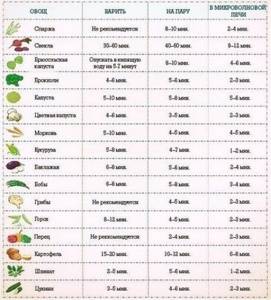
Gym for beginners: how to start eating right and exercising?
Benefits of Raw Vegetables
Eating phytonutrients found in plant foods is associated with a reduced risk of some chronic diseases, such as heart disease and stroke, cancer and age-related eye diseases.
But many of these beneficial compounds can be destroyed by heat and many types of food processing.
Additionally, water-soluble vitamins such as vitamins C and B are leached during the cooking process. According to a 2007 review published in the Journal of the Science of Food and Agriculture, up to 55% of the vitamin C in vegetables is lost during cooking, compared to eating them raw.
Eating raw vegetables can also improve mental health and relieve symptoms of depression. A 2021 study published in the journal Frontiers in Psychology found that people who consumed more foods in their natural, raw form reported higher levels of psychological well-being compared to those who ate mostly cooked foods.
For those watching their weight, eating raw foods can be beneficial because it requires more chewing, which slows down the process of food absorption.
When are boiled vegetables healthier than fresh ones?
It is believed that raw vegetables are much healthier than those that have been cooked. And there is undoubtedly a huge amount of truth in this statement.
Indeed, heat treatment significantly reduces the vitamin and nutritional value of vegetables. However, there are a number of cases when a vegetable that has been cooked can be of much greater benefit to a person. And it all depends on the vegetable and the purpose for which it is eaten. Undoubtedly, vegetables and fruits are good only as a source of potassium, beta-carotene and vitamin C. All other elements are contained in very small quantities. But in order to get that little value wisely, you need to learn to avoid the pitfalls of vegetables and fruits. The properties of fresh and cooked vegetables differ so much that they can be mistaken for different products. Let's try to figure out what is better - boil vegetables, fry them, or eat them raw? However, nutritionists still advise not to fry, but to boil vegetables, or eat them raw. In this case, the choice depends on what specific beneficial properties of vegetables interest you.
Eating raw carrots is a waste of time: only boiled carrots will give us beta-carotene. But for a child, eating raw vegetables is not only not healthy, but even dangerous. The fiber and pectin contained in the orange root vegetable put too much strain on children's fragile pancreas. In addition, compared to raw carrots, boiled carrots contain three times more antioxidants, which help prevent the development of cancer and Alzheimer's disease. Raw carrots are an invaluable source of vitamin PP, which protects us from stress and sleep disorders, as well as potassium and iodine, which are necessary for the heart and thyroid gland. Carrot fiber stimulates the intestines, preventing constipation.
In boiled carrots, the amount of beta-carotene and lutein needed for good vision and youthful skin is much greater than in raw carrots, and they are absorbed five times better. Boiled carrots are recommended for intestinal, kidney and constipation diseases. Note that the cell walls of many vegetables become softer when cooked. As a result, for example, from broccoli and spinach after cooking, a person receives 10-30% of carotenoids, and from raw ones only 2-3%. Orthodox raw foodists, of course, will object and say that vitamins are lost during heat treatment. Indeed, some of them are lost, but we assimilate the rest much better.
Raw tomatoes have a beneficial effect on the nervous system, as they contain B vitamins. They supply the human body with magnesium and zinc, which are necessary for our skin and hair, as well as potassium, good for the heart, and calcium for bones. They contain chromium, which helps control appetite, which makes tomatoes helpers of all those losing weight.
When cooked, some of the vitamin C in tomatoes is lost, but the content of lycopene, one of the most powerful antioxidants in nature, sharply increases. Boiled tomato with a small amount of oil will allow lycopene to be absorbed as much as possible to protect us from cancer and cardiovascular diseases, strengthen the immune system and normalize blood viscosity.
Boiled and stewed tomatoes are also much healthier than fresh ones. Although heat treatment somewhat reduces the vitamin value of tomatoes, it improves the absorption of lycopenes, the pigments that give tomatoes their specific bright red color. Lycopenes are very strong antioxidants and therefore prevent blood vessel diseases and the occurrence of malignant tumors.
How to get potassium from vegetables and fruits without harming the pancreas? It is better to bake eggplant (or any other vegetable or fruit) in the oven. The concentration of potassium increases, and nitrates and nitrites come out with the juice into the pan. As a result, you have a more competent product. Ideal when served with grilled vegetables as a side dish.
Potatoes require special treatment. Know that when you enjoy mashed potatoes, you are eating one starch. Fried potatoes are even more harmful. Potatoes should only be baked with their skins on. Those 2 mm that we clean off are the most valuable thing - vitamin C and potassium. Everything else is basically harmful to our body.
Raw garlic is famous for its high vitamin C content and its unique essential oils that have antimicrobial properties. It will help lower blood pressure and improve blood circulation to the brain. After heat treatment, both vitamin C and essential oils disappear from garlic, but the content of allicin, which prevents the formation of blood clots and cholesterol plaques, increases.
Raw beets are usually rarely consumed, but they contain a lot of B vitamins, copper, and phosphorus. When boiled, beets retain their beneficial properties, and they also act as a laxative.
It should also be noted that boiled vegetables (fresh vegetables are strictly unacceptable here) are indicated when following a number of therapeutic diets. These include, for example, a diet prescribed for gastric and duodenal ulcers, as well as a diet for exacerbation of gastroduodenitis with normal and high acidity (for these diseases, pureed steamed vegetables are eaten). Dishes made from boiled vegetables have a number of beneficial properties. They are used in dietary and baby food, for fasting days and effective diets.
- garlic , horseradish or finely chopped onion with vegetable oil (you can use apple cider vinegar or fresh tomato ), such vegetables retain their nutritional value and seem more tasty. And so that they, like any boiled food, do not form deposits of inorganic salts of oxalic acid in the body, add three times more raw vegetables to boiled vegetables: parsley or other herbs, tomatoes , grated cucumbers , onions .
Rules for cooking vegetables
- Consume fruits and vegetables in their natural form (i.e., do not steam, fry, or stew) and only raw. < they were in the air for a very long time, they were not until the earth was dug up or wood was removed only as an opportunity, for vegetables), (there are fruits and fruits>
- If you add boiled vegetables ( potatoes , beans ) to raw vegetables and freshly prepared fruits, then at least do not boil them, but cook them baked or steamed, otherwise all vitamins and microelements will be lost.
You should never cook fruit at all - you will get poison. Boiled fruits - compotes, jams, preserves - are dangerous products, just like alcohol and sugar, for our immune system. You need to know this, remember and not violate it. If you have to cook vegetables, then cook over low heat, adding a few tablespoons of water (not oil), in a hermetically sealed pan. With this method of preparing vegetables, plant juices are preserved, and along with them, mineral salts . Only when the vegetables are served on the table or when they are ready, only then can vegetable fat or a little sour cream be added to them at the table.
- Never salt vegetables! Only after they are removed from the heat, you can add well-ground garlic , horseradish or finely chopped onion with vegetable oil (you can add apple cider vinegar or fresh tomato ), such vegetables retain their nutritional value and seem more tasty. And so that they, like any boiled food, do not form deposits of inorganic salts of oxalic acid in the body, add three times more raw vegetables to boiled vegetables: parsley or other herbs, tomatoes , grated cucumbers , onions .
As you know, fresh vegetables and fruits are excellent sources of potassium, beta-carotene and vitamin C for the body. Since other elements are present in plant foods in small quantities, their indicators were not taken into account during the study.
Scientists from the Institute of Food Research (England) compared the benefits of vegetables such as carrots, broccoli, spinach, tomatoes, potatoes and eggplants raw and after heat treatment.
It turned out that the body can only obtain beta-carotene contained in carrots from boiled vegetables. In addition, boiled root vegetables contain 3 times more antioxidants than raw ones!
But the carotenoids contained in broccoli and spinach are absorbed by the digestive tract by 10-30% as a result of heat treatment, while in their raw form the digestibility is only 2-3%.
Also, lycopenes from boiled or stewed tomatoes are absorbed better than from raw ones. In general, it is recommended to eat potatoes and eggplants only baked: during the cooking process, almost all nitrates are removed from them, and their beneficial nutritional value only increases.
As for vitamins, which are known to be destroyed during heat treatment, scientists claim that “some of the vitamins, of course, are lost, but the remaining ones are absorbed by the body 6-7 times better.”
What about enzymes in raw foods?
Proponents of a raw diet often point out that raw plant foods contain natural enzymes. These enzymes have digestive and other health benefits that are destroyed by heat. And from a certain point of view they are right.
Heating destroys enzymes. But we ourselves produce digestive enzymes, and healthy people have no problems synthesizing the enzymes necessary for digestion. In addition, most plant enzymes are destroyed in the human intestine anyway.
So, although consuming enzymes found in raw fruits and vegetables may provide some digestive benefits, there is little evidence to support that this is the main reason for eating raw foods. Of course, there are other good reasons to include plenty of raw foods in your diet.
The best way to ensure you have enough enzymes to support digestion is to maintain overall digestive health. (To improve your gut health, read this article.)
Spinach
Where would we be without him? Like broccoli, spinach is rich in carotenoids. It also contains a lot of calcium. After heat treatment, the cell walls of the vegetable become thinner and softer. Thanks to this, the human body receives 10 times more carotenoids from cooked spinach than from fresh vegetables.
Of course, after cooking, some products lose their supply of vitamins, but the remaining microelements can be more valuable for the body, and their quantity increases with proper processing. For example, garlic. After cooking, the amount of iron and vitamin C in it decreases. But the amount of allicitin increases, which provides an antibacterial effect.
The best solution is a balanced diet, including both raw and healthy boiled vegetables. You shouldn’t torture yourself and eat raw potatoes and beets, just to preserve the necessary substances; the body can be provided with them using more tasty methods.
Why Eating Too Much Cruciferous Vegetables Can Harm Your Health
Can cabbage be harmful? Sometimes it can.
Eating too many raw cruciferous vegetables can lead to hypothyroidism, a condition in which the thyroid gland does not produce enough thyroid hormones.
“Large quantity” – how much? According to a 1993 study published in the Journal of the Science of Food and Agriculture, 10 cups of raw kale per day is the limit.
Also, the amount depends on the type of cruciferous vegetables. The cruciferous family includes: cabbage, asparagus cabbage, Brussels sprouts, cauliflower, kohlrabi, broccoli, watercress, kale, rapeseed, horseradish, radishes, turnips, rutabaga, Chinese cabbage, mustard seed.
Theoretically, you can eat 50 cups of raw cauliflower per day. But only three glasses of raw mustard a day. One study found that a woman who ate 15 cups of raw bok choy per day for several weeks fell into a hypothyroid coma.
But a reasonable amount of raw cruciferous vegetables will do. And the goitrogenic properties of kale and other cruciferous vegetables disappear when you cook them. So, the best approach is to eat some raw and cooked cruciferous vegetables, and include more colorful vegetables in your diet.
Stewed cabbage: a luxurious side dish and vitamins
Cabbage is one of the most familiar, traditional vegetables that we are accustomed to include quite often in our diet. Fortunately, in the recipes of our most beloved cabbage soup, borscht and main courses, cooked cabbage occupies a central place. This is practically a universal product:
- tender leaves of young cabbage become the basis for the first spring salads of fresh vegetables;
- sauerkraut is a cheap and effective way to combat spring hypovitaminosis;
- Stewed (or boiled) sauerkraut as part of soups, stews or baking fillings is a real treasure containing a record concentration of valuable vitamins.
Stewed or boiled cabbage is not only tasty, such a dish is not too high in calories, and, in addition, in this form its coarse dietary fiber irritates the stomach much less.
Have you decided to cook a classic dish of Russian cuisine - cabbage soup made from sauerkraut? You shouldn’t cook them for future use; after storing them in the refrigerator, the content of much-needed vitamin C is reduced by almost 90%!
How to Best Cook Cruciferous Vegetables and Garlic for Maximum Benefits
If you want to cook broccoli and other cruciferous vegetables, including Brussels sprouts, kale, cauliflower, radishes, rutabaga, turnip greens and arugula, here are three science-backed steps you can take to maximize their health benefits:
- Pre-cut them and let them sit for 40 minutes before cooking.
- Add some mustard seed powder (or some daikon radish, horseradish or wasabi) after cooking, or
- Add a small amount of fresh raw cruciferous vegetables to cooked ones.
Here's how to get the most out of boiled garlic:
- Allicin, which fights cancer, is relatively heat stable. If you want to cook the garlic, crush or mince it and wait 10 minutes before cooking. This will allow allicin to form.
Menu for a week of diet with boiled vegetables
| Breakfast |
|
| Lunches |
|
| Snacks |
|
| Dinners |
|
Can a raw food diet be good for your health?
A raw food diet typically contains 70% (and sometimes 100%) foods that have not been cooked or processed. To be considered raw, food cannot be heated above 40 degrees Celsius (104 degrees Fahrenheit). Instead, people on a raw food diet consume a lot of fresh, dehydrated and fermented foods.
There are thousands of anecdotal reports of people using a raw food diet to treat conditions such as acne, autoimmune diseases, candida, cancer and a variety of other diseases. However, there are several scientific studies that support these claims.
Here are some studies that have shown positive results:
- A 2000 study published in the Scandinavian Journal of Rheumatology found that a raw, low-salt vegan diet helped relieve fibromyalgia symptoms.
- A 2009 study published in the journal Complementary Therapies in Medicine found that people who stayed one to three weeks at a vegan retreat center had improved mental and emotional health.
Why a raw food diet may not be beneficial in the long term
Although a raw food diet has been found to produce remarkable results in the short term, it is a difficult eating system to follow. Raw food diets also tend to be time-consuming and not conducive to long-term health.
Chris Wark, who has included a raw food diet in his cancer-fighting efforts, in addition to lifestyle changes, says: "Raw food can heal, but not in the long term."
Dr. Michael Greger says switching to a raw food diet can improve your health because it is an extremely healthy diet.
He says, “One of the benefits of a raw diet over a vegan diet is that it gets rid of all the food junk.” (For example, vegan marshmallows and donuts.)
The researchers also found that long-term adherence to a raw food diet can lead to significant weight loss, which can cause health problems due to being underweight, including amenorrhea in women, a condition in which menstruation stops.
And a 2005 study published in the Archives of Internal Medicine linked a 100% raw plant-based diet to lower bone mass, which is typically a sign of osteoporosis and an increased risk of fractures.
Benefits and contraindications
One of the disadvantages of such a diet is low calorie content, which can cause weakness, headaches, and a depressed emotional state. It is not recommended to stay on this diet for more than fourteen days, since the body needs fats and carbohydrates, which are practically absent on this diet.
It should also be noted that such weight loss is contraindicated for people suffering from gastrointestinal disorders, gastritis and ulcers. And children and teenagers under 16 years of age are strictly prohibited from losing weight in this way.
Pros of the diet:
- losing several kilograms in a short period of time;
- normalization of stool and improvement of sleep quality;
- improving the color and condition of skin and hair.
Minuses:
- low calorie diet;
- lack of healthy fats and carbohydrates for the normal functioning of the body;
- the likelihood that all the lost kilograms will come back;
- weakness, increased sensitivity and irritability;
- increased likelihood of disruptions due to strong restrictions;
- slowing metabolism due to a severe calorie deficit.
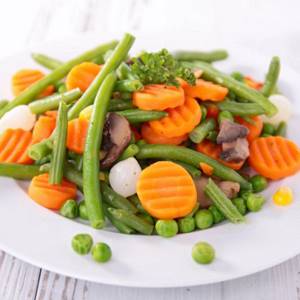
Raw + cooked = winning combination for health
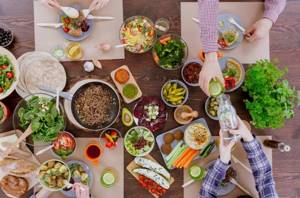
Most nutrition experts agree that you need both raw and cooked vegetables to get the maximum amount of vitamins and minerals.
While some may be better cooked and others raw, the bottom line is this: more fruits and vegetables are better, period.
“We should eat plenty of raw foods every day, but to think that a diet consisting of 100% raw foods is better than a diet with steamed vegetables or soup is simply a misrepresentation of the science,” says Dr. Joel Fuhrman.
He recommends starting lunch and dinner with a large serving of raw salad or raw vegetables. And then you can eat cooked vegetable food.
Beet
After cooking, beets retain almost 100% of their beneficial properties: they contain a huge amount of B vitamins and mineral salts, which are not sensitive to high temperatures.
The vegetable also contains betaine and minerals, which are absorbed much better after cooking. By the way, betaine is a unique substance that is almost impossible to find in other products. This compound helps digest protein and stimulates liver function. In addition, beets help cleanse the kidneys, blood and strengthen the walls of blood vessels. Text: Natalia Kapitsa
Eat your vegetables the way you want and listen to your body
It is well known that people who eat more vegetables and fruits are less susceptible to chronic diseases.
When it comes to eating healthier, more colorful fruits and vegetables, it's best to eat them the way you like them.
As Dr. Michael Greger says, "The best way to eat vegetables is whichever way will make you eat more of them, with the exception of frying, which simply adds too many empty calories."
And when it comes to raw and cooked, listen to your body and find the balance that works for you because we are all unique. You may want to change your diet depending on the time of year, changes in your health and age. But ultimately, what's most important for our health is to eat more vegetables in any form, raw or cooked.
About nitrates
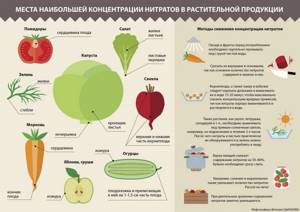
Nitrates are salts of nitric acid that were an integral part of soil, water, plants and animals even before the advent of man and all these “chemicals” of yours! Nitrates enter our body with food and also with water. The danger is not the content of nitric acid salts in products itself, but their excessive quantity . Norm of nitrates: per day no more than 3.7 mg of nitrates per 1 kg of human body weight. Those. for a person weighing 60 kg it will be 222 mg!
Please note that the upper limit of normal does not mean that you will get poisoned!
Most of the nitrates are in the growth zones of the fruit, where protein synthesis occurs. For example, in the stalk and top leaves of cabbage, in potato peels, and cucumber tails. Therefore, it is recommended to peel them, cut them off and not use them for food.
If you are still afraid of them, it is very easy to get rid of nitrates: for example, during storage, potatoes lose about 70% of nitrates, carrots up to 56%. When boiling potatoes, more than half of the remaining amount will be released into the broth - this is another argument in favor of boiled potatoes over fried ones. In addition, the heat treatment itself also reduces nitrate levels.
To reduce the amount of nitrates in vegetables and fruits, peel them and place them in cold water for 20 minutes. In general, any heat treatment also benefits the fruit: for example, when cooking, the amount of nitrates is reduced by 80%. But the main thing is not to faint at the mere mention of nitrates.
According to WHO recommendations, an adult should eat at least 450 grams of vegetables and fruits per day: to improve intestinal function and prevent cancer. If you eat 500 grams of market apples, 8 mg of nitrates will enter the body, that is, the daily requirement for a baby weighing two kilograms. So don't deny yourself watermelon or apples for dessert!





